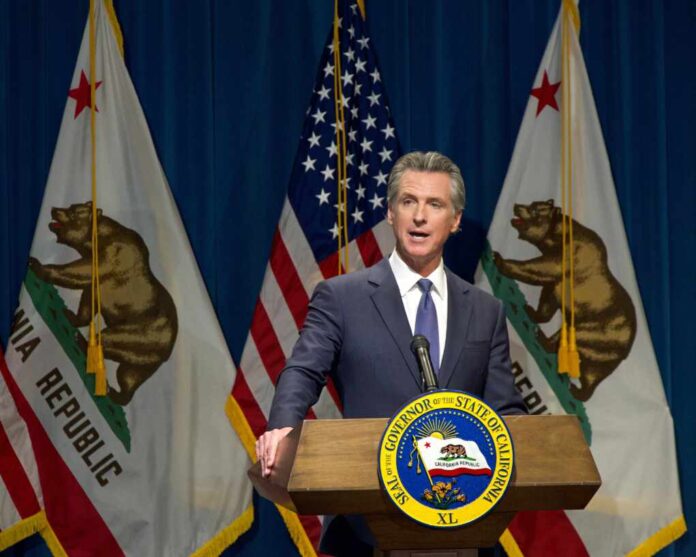
As state governments struggle with public finance and technological advances, California continues its headstrong move toward an ambitious but uncertain electric vehicle (EV) future. Gov. Gavin Newsom (D) is spearheading a new $1.9 billion investment of taxpayer money in public EV charging infrastructure, aligning with the liberal stronghold state’s clean transportation goals. However, the move comes amid declining EV sales and a looming state budget deficit.
The plan, approved by the California Energy Commission (CEC), aims to significantly expand the state’s charging network by adding 40,000 new chargers to the existing infrastructure. This initiative, part of a broader $3.7 billion investment, is designed to pave the way for California’s zero-emission vehicle (ZEV) goals. Yet, this massive financial commitment comes when EV sales in California have experienced a downturn, with a 10% drop in the last quarter of 2023 alone.
California to spend $1.9 billion more on public EV chargers as EV sales collapse https://t.co/vqDqHau6gL
— Trump2024_no_matter_what (@TexasTrump2024) February 16, 2024
Newsom’s vision of a “clean transportation future” is grounded in the belief that over a quarter of new cars sold in the state are electric. This optimism is reflected in the state’s mandate to ban the sale of fossil-fuel vehicles by 2035, requiring ZEVs to constitute 35% of sales by model year 2026. However, with ZEVs currently accounting for 25% of vehicle sales and recent sales trends showing a decline, achieving this target appears increasingly challenging.
Critics argue that the focus on expanding the charging network, while necessary for supporting EV adoption, does not address the underlying issues affecting EV reliability and consumer confidence. Reports highlight that 21% of public EV chargers are non-functional due to various technical problems. EVs have 79% more reliability issues than their gas-powered counterparts.
These factors, combined with the rapid evolution of charging technology that could render newly installed chargers obsolete, raise questions about the efficiency and foresight of the state’s investment.
California, long flush with surplus public funds, faces a $68 billion budget deficit this fiscal year, and concerns are mounting over the state’s fiscal resilience.
Despite these challenges, the state remains committed to its clean transportation goals, with a significant portion of the investment directed to disadvantaged and low-income communities. With EV sales waning and technological advancements in flux, California’s ambitious plans may need reevaluation to align with economic reality and the evolving landscape of electric transportation.
















